7 Classics That Offer the Most Horsepower Per Dollar
We track thousands of cars for the Hagerty Price Guide. Values range from four figures to eight, and performance ranges from single-digit horsepower to over a thousand. If you’re looking for the most bang for your buck, you might be wondering what’s the most amount of factory-rated horsepower you can get for the least amount of money. We wondered that, too, so we dug into the data, looking at horsepower ratings relative to condition #2 (“Excellent”) Hagerty Price Guide values.
For reference, the list of worst deals in terms of cost per horsepower includes, predictably, a Ferrari 250 GTO. For each of that car’s 300 ponies you’ll pay over $213K. A McLaren F1’s horses cost $35K each. Improving the ratio dramatically but still not a bargain, Porsche 911 Carreras from the ’80s cost more than $400 per hp, and a Corvette C5 Z06 costs $95. Way down the ladder, the cheapest power in the collector car market comes in around $25–$35 per horse.
A few themes emerged—big coupes and sedans figure prominently, as do cars that find themselves adjacent to truly lusted-after models. And, as always with data, there’s a result that technically answers the question without addressing the spirit of the effort. With that context, here are seven cars that offer some of the cheapest horsepower out there.
1970 Buick Wildcat
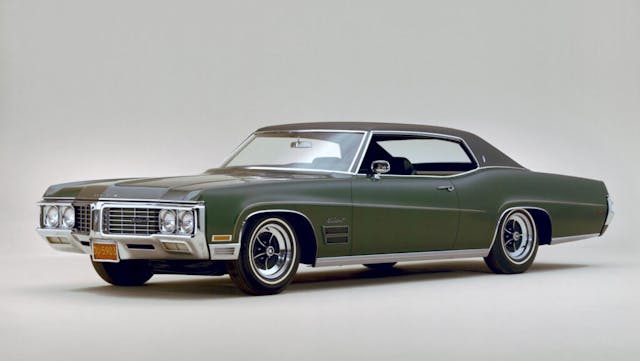
Buick’s 455-cubic-inch V-8 is a torque monster, and power is ample, even accounting for 1970’s gross (rather than net) horsepower ratings. The 370 horses the 455 cranked out in the ’70 Wildcat is quite a bit, no matter how you’re measuring.
At $10,200 for a #2 condition example, this personal luxury coupe is stylish and relatively affordable. The Wildcat may be Buick’s best answer to this question, blending the traditional image of what makes a classic car with a solid $27-per-horse ratio. With that said, you can get a 315-horse 455 in a 1971 Buick Estate Wagon, and at $7800 for one in #2 condition, that model tops our list with the most affordable ratio of all: $24.76/hp.
1996–99 Ford Taurus SHO
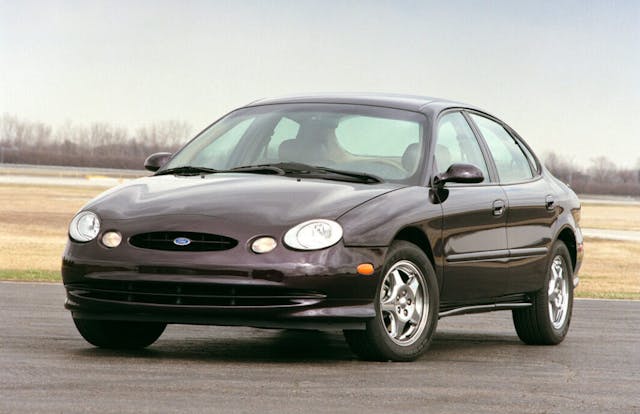
Ford’s four-figure factory hot rod with a Japanese heart, the first-generation Taurus SHO has long been one of the cheapest ways into a modern classic that’s fun but still practical. The first-gen car is cheap, but in terms of pure ponies per buck, it’s not quite the bargain that is the third generation.
When that Taurus came out in 1996, it embraced the melted jellybean style of the 1990s and early 2000s and was both bigger and softer than its predecessors. It also only came with an automatic. Even so, the Yamaha engine under the gentle curves of that hood was now a V-8 (with a block by Cosworth, no less). It wasn’t a good seller, and Ford canceled the SHO when it introduced the fourth-gen Taurus. The SHO’s V-8 is rated at 235 hp, which isn’t anything to write home about, but the car’s #2 value is just $8000. That comes out to $34 per horsepower.
1962–70 Chrysler 300 Sedan
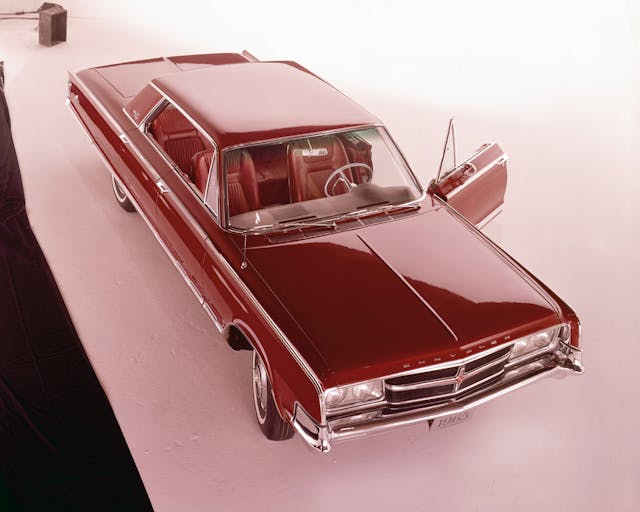
Chrysler’s 300 badge spans nearly 70 years, lots of very different cars, and several price points. The original “Letter Series” Chrysler 300s are some of the most attractive and collectible American cars of the 1950s. The modern one, which finally ended production last year, offered performance and luxury at an attainable price. And, as Katt Williams says, it “do look like a [Rolls-Royce] Phantom … until a Phantom pull up.”
Falling in the middle are the “non-letter series” cars of the 1960s. A full-size model that comes as a four-door hardtop, two-door hardtop, or convertible, it’s also a model whose values have been pretty sleepy in the market. This is particularly true of the sedans: Over the past 15 years, their values haven’t kept up with inflation. Values for some model years have appreciated just 11 percent in that period. That means they’re cheap today, with #2 values around 10 or 11 grand.
Since they came with the same 383-, 413- and 440-cubic-inch V-8s as the sexier, more valuable two-door models, sedans offer more bang for the buck. Some of the later 440/350-hp and 440/375-hp cars have pricier ponies at $35 or $36 per hp, some of the 413/360-hp and 383/315-hp cars can be had for as little as $31/hp.
1985–88 Cadillac Cimarron (V-6)
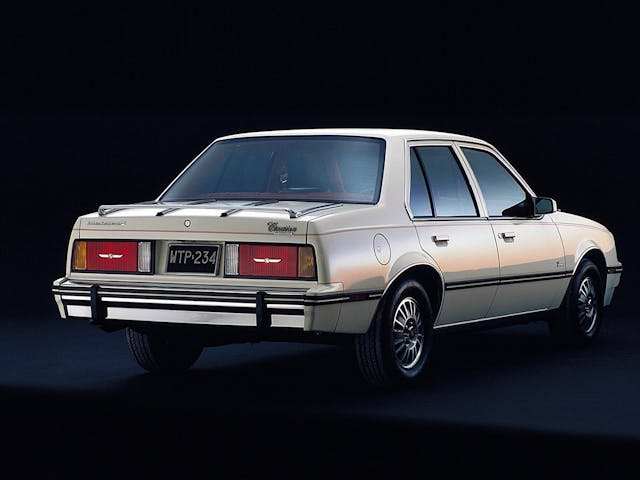
The Cimarron is the polar opposite of the Ferrari GTO in almost every way, including the way the dollar-to-horsepower ratio is skewed. Technically, the Cimarron offers more power per dollar than almost any car on the road because, it’s just so cheap. The median #2 value for this gussied-up Cavalier that the ads called “The Cadillac of Smaller Cars” is just $3600. Final-year 1988 models, though, hit a wallet-stretching $4100.
Later ones got a 125-hp V-6 and nifty (now retro) digital gauges, and from a bang-for-buck perspective the 1986–87 models are the sweet spot. They’re just $29/hp.
1996 Pontiac Firebird/Chevrolet Camaro (V-6)
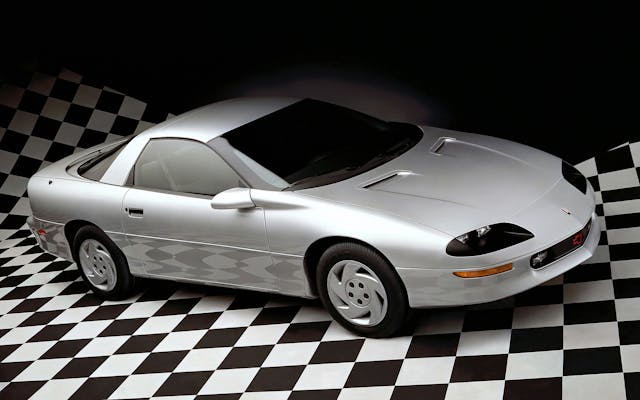
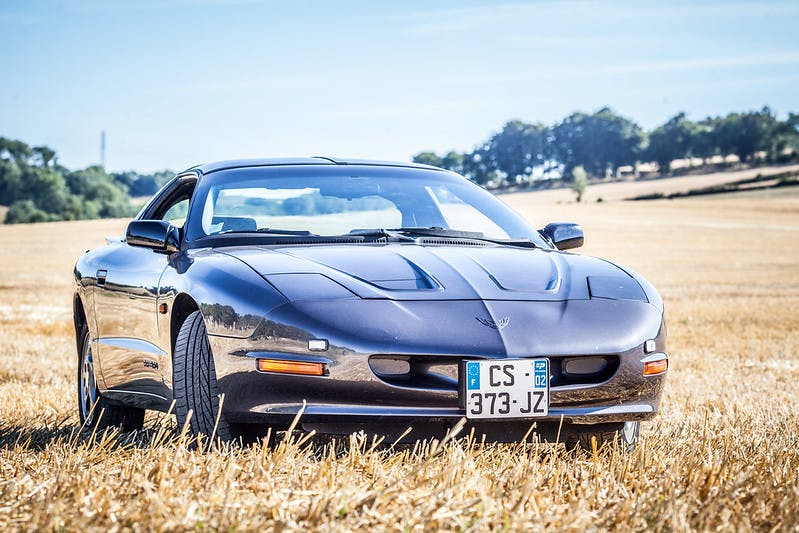
Trans Am, WS6, Firehawk, Z28, SS—those are the names fondly remembered by F-body fans and the models most sought after now that they’re modern collector cars, but the bulk of fourth generation Firebird/Camaro production were base models with a V-6, which came in both 3.4- and 3.8-liter displacements.
All V-6 Camaros and Firebirds are cheap, but in terms of bang for buck the 1996 Camaro and Firebird V-6 coupes take the cake. They’re rated at 200 hp and their condition #2 value is $5500, which comes out to $27.50 per pony.
1970 Chrysler Newport Sedan
The fifth-generation Newport came out in 1969, adopting the fuselage styling that characterized full-sized Chryslers for the next few years. It’s handsome, roomy, and comfortable. But don’t take it from me, take it from Willie Mays (in the commercial above).
While it lacked the decals and High Impact paint colors that made Mopar muscle cars so flamboyant, the Newport nevertheless came with muscle car grunt, as a 440/375-hp V-8 was available. Today, the 1970 sedan model with that engine brings serious power for not-so-serious money. Its condition #2 value is just $10,600, which comes out to a little over $28 per hp.
1992–97 Cadillac Seville STS

The ’90s weren’t Cadillac’s golden age, but the STS (“Seville Touring Sedan”) did win Motor Trend’s Car of the Year in 1992, and from 1993 the model got the 32-valve Northstar V-8 engine, which offered up to 300 hp.
An STS cost 40 grand or more in its day, but the #2 value for one now is typically under nine grand. Depending on year, it come out to about $30 per hp.
***
Check out the Hagerty Media homepage so you don’t miss a single story, or better yet, bookmark it. To get our best stories delivered right to your inbox, subscribe to our newsletters.


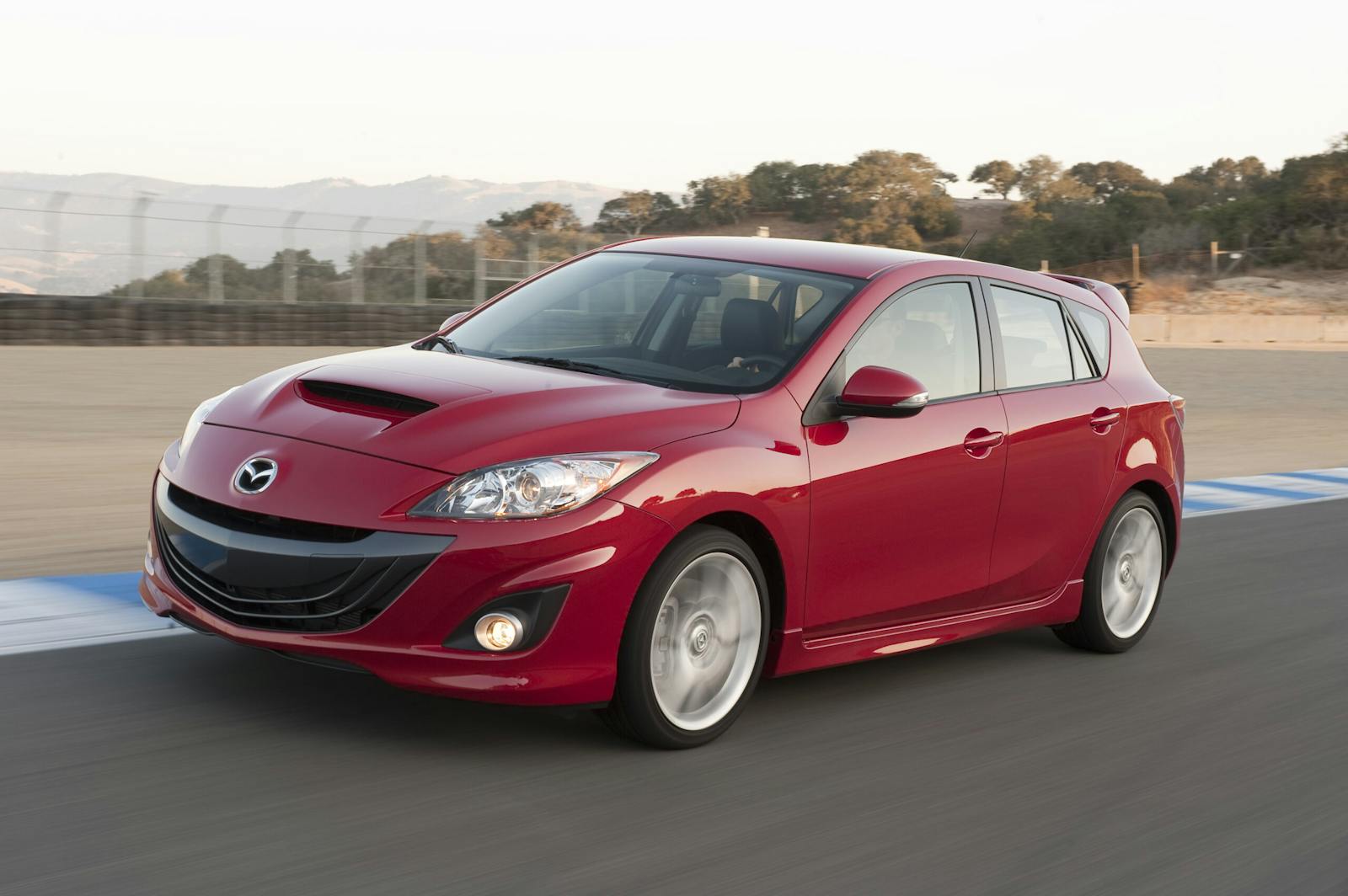
If the SHO, Cimarron, and V6 F Bodies can be on this list why not any of the LS4 cars that GM produced? They are often overlooked, and granted they’re not as old and may not be seen as “collector” cars yet, but try telling that to anyone with an excellent condition Buick LaCrosse Super or Pontiac Grand Prix GXP. You can pick up an 06-9 Impala SS for right around $25/hp.
When I was a kid my Dad had a 69 Chysler 300 4 door with the 440 Tnt engine. He out ran a 383 Roadrunner and a Mach 1 Mustang with it. That big beast would haul ass. Nothing like old school torque. I have a 73 Roadrunner with a 440 in it off course.
If you’re including the Cimarron then you could throw in a LOT of very cheap cars — not much per pony, and a lot more “desirable” than a Cimarron. Chevy X-11, so instance. Not really desirable, but think I’d rather have that than a Cimarron. Old luxury cars are always a bargain compared to original costs, but an unloved one is even more of a “bargain”. you might not get laughed at if you could find a pristine/very good Cimarron though. They were probably junked or driven into the ground though.
Some of the mid 70s AMC cars should be good. The 70-71 Hornet SC/360 should be a candidate, though I didn’t do the math, as well as 304 Gremlins.
I owned a 1997 Cadillac STS, $54K sticker – complete with phone in the console. Bought it used in 1999 with 25K miles for $27K. I thought I made the deal of a lifetime. Only daily driver that stranded me twice, fit and finish for a car of that price was garbage, the electrical system went out at 45K miles, 48K crankcase seal started dumping oil, and major suspension faults at 52K miles. Made the suspension repairs and immediately listed it for sale! Could NOT get the phone to ring once when trying to sell at $12,000! Ended up trading it in. I could have lit $100 bills on fire in the backyard and saved money instead of buying that car. If the owner GAVE you $1,000 to take that car, you would still lose money!
I will not do the power/cost math. The only new car I ever owned was a 1966 Buick Electra 225 – two door, midnight Blue exterior and grey brocade interior. BE STILL MY HEART! It had the 455 CDI engine and the new hydromatic shared only with Cadillac, so said GM. In September of 1970, with 100K on the odo, I moved from Misipi (correct spelling) to Los Angeles – pulling the largest enclosed trailer that U-Haul rented – at 70 MPH. That torque monster was the love of my life. Shudda never sold it.
My Bad! It was a 1964!!!
Wow all these cars suck! No thank you lol.
I had a 1997 Pontiac Bonneville I bought for 500 bucks 10 yrs ago with a supercharged 3.8l v6 250 hp that flew.
My parents had a 1970 Newport in the same green hue as the one in the Willie Mays commercial, with the optional 440. I got my temp permit in 1972 and got to drive it once. With my dad sitting next to me and my mom in the back seat I chauffeured us to a family dinner. The “Holy S- – -“ from my mouth when we hit the city limits and my foot hit the gas did not go unnoticed, and the car got traded in the next week. Hmm…….
Dad had a 71 Chrysler 300 4 door hardtop with the 440. It was a great car. I’d love to have one of those if I could find one.
While you could do a 0-60 / quarter mile times $ comparison then , especially with older cars , you’re looking at available gear ratios and. Doable yes but when you consider all the manufacturers models over the years and figuring in the horsepower to weight to cost no small task. I’m somewhat surprised no featherweights made the list here. Even when some seem to have laughable hp/torque on paper numbers by the math I’d expected a few. I am believer in the ‘ more horsepower makes a car accelerate faster lower weight makes it do everything better’ . No offence to the big block lead sled crowd, I like them too. But it does in a way make you understand those early JDM guys. That inferior quality steel is almost like buying a factory acid dipped car. Just don’t take it out in rain.
thought my 65 riv would be on there
In 1970 my father had gotten tired of towing our antique cars to shows in our old un-air conditioned Chevy pick up and decided to order a new Buick Park Electra 225 equipped for towing. He gave me the order blank and said pick out what we need to tow with it. It was the most bad ass big Buick ever with the 455, dual exhaust, gauges, HD suspension, load leveling rear suspension, Posi with a 3.55 (or maybe a 3.91, I don’t recall anymore but it had the tallest numerical ratio they offered) and an assortment of other options. For a large tank it was a ball to drive. It also had the Speed Minder speedometer, which was fun to set at higher speeds and try to make it buzz.